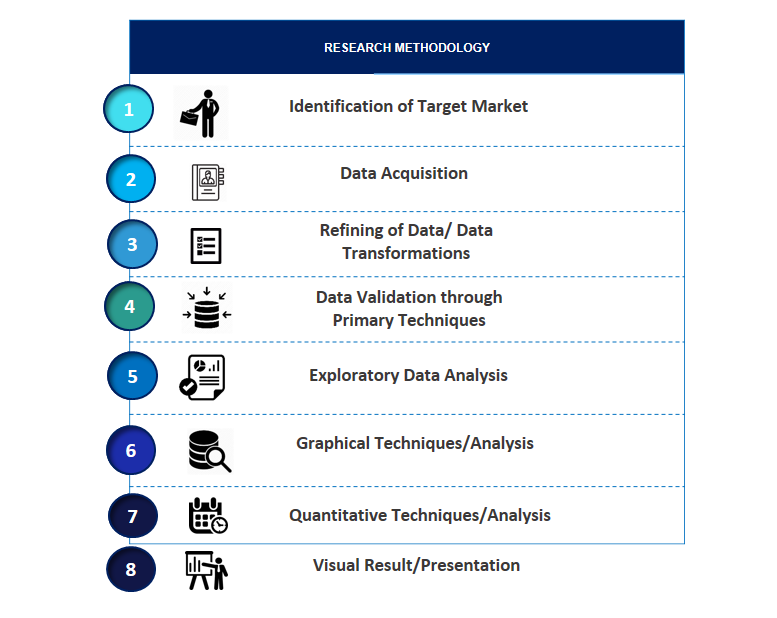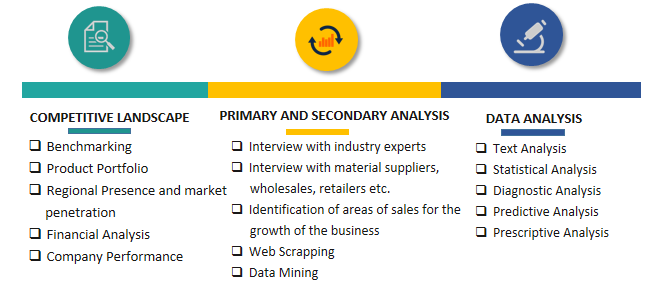Europe Fruit Concentrate Market Introduction and Overview
According to SPER Market Research, the Europe Fruit Concentrate Market is estimated to reach USD XX billion by 2033 with a CAGR of 4.58%.
The report includes an in-depth analysis of the Europe Fruit Concentrate Market, including market size and trends, product mix, distribution channels, and supplier analysis. Fruit concentrate is created when the water is extracted from the fruit and used in the beverage sector. Fruit concentrate is commonly utilized in the creation of alcoholic, soft, and non-alcoholic beverages. The fruits are scraped, rinsed, and ground into pulp to produce a fruit concentrate. There are numerous methods for extracting fruit concentrate, and these procedures can occasionally diminish the amount of vitamins and fiber in the fruit. Fruit concentrates provide several advantages, including improved skin care, a longer shelf life, beneficial plant chemicals, high nutrient content, and a low cost.
- Kerry Group plc unveiled an extract technology in September 2020 that allows innovators to create using citrus fruit flavor essences, which are classified as natural extracts. The technology extends the finish of flavored NPD, making it more full-bodied. It is labeled as New! Citrus Extract is a solution created using Kerry's non-thermal liquid/liquid extraction process, which produces highly concentrated extracts with much lower quantities of terpenes and sesquiterpenes.
Market Opportunities and Challenges
Opportunities: Consumer demand for fruit-flavored beverages is a result of rising health consciousness across all demographics. There is a growing demand for fruit concentrate in the European market since it is the most affordable and practical substitute for fresh fruit in many different applications. Also, the market will be driven by the expansion of the food and beverage sector, which is being fueled by a rise in healthy eating trends, a shift in consumer behavior, a rise in the demand for prepared foods, and a drop in the cost of shipping fruit concentrates. Fruit juice consumption awareness and shifting consumer trends and dietary choices, together with the use of sugar substitutes in the confectionery industry, are some of the factors propelling the fruit concentrate market in Europe.
Challenges: The market for fruit concentrates is primarily restricted by artificial tastes, excessive sugar and calorie intake (i.e., lower levels of vitamins and antioxidants), sugar-filled soft drinks, numerous food and health safety laws, and growing public awareness of the shortage. The principal obstacles to the expansion of the fruit juice concentrates business in Europe are fiber and the policies implemented by other nations. Fruit concentrate production is dependent on fruit production, and high fructose consumption has negative effects. These factors are preventing the Europe Fruit Concentrate Market from growing as rapidly as it could, as fresh fruits are always preferable for consumption over concentrated ones.
Market Competitive Landscape
The Fruit Concentrate Market in Europe is highly fragmented. Some of the market key players are Ingredion Incorporated, Dohler GmbH, Archer Daniels Midland Company, AGRANA Beteiligungs-AG, Lemonconcentrate S.L.U., SunOpta, Inc., Kerry Group plc, Coöperatie Koninklijke Cosun U.A., Capricorn Food Product India Ltd., and The Coca-Cola Company are some of the notable businesses highlighted in the research.
Scope of the Report:
| Report Metric | Details |
| Market size available for years | 2020-2033 |
| Base year considered | 2023 |
| Forecast period | 2024-2033 |
| Segments covered | By Distribution Channel, By Application, By Source
|
| Regions covered | UK, France, Germany, Italy, Spain, Rest of Europe
|
| Companies Covered | Ingredion Incorporated, Dohler GmbH, Archer Daniels Midland Company, AGRANA Beteiligungs-AG, Lemonconcentrate S.L.U., SunOpta, Inc., Kerry Group plc, Coöperatie Koninklijke Cosun U.A., Capricorn Food Product India Ltd., and The Coca-Cola Company
|
COVID-19 Impact on Europe Fruit Concentrate Market
The market for fruit concentrates has been impacted by COVID-19 in both positive and bad ways. The increasing need for concentrated fruits is one of COVID-19's benefits. Furthermore, the scarcity of fruit concentrate is adversely impacted. Furthermore, The fruit concentrate market has grown at a much slower rate due to the COVID-19 epidemic. The manufacturing facilities had to temporarily close due to the stringent regulations, which had an impact on the Fruit Concentrate's volume production. During this time, there was a labor shortage since crew members were returning to their home countries, which hindered market expansion. The distribution of finished goods and the scarcity of raw materials were further consequences of the supply chain disruption.
Key Target Audience:
- Beverage Manufacturer
- Consumer
- Distributers
- Food Processors
- Retailers
Our in-depth analysis of the Europe Fruit Concentrate Market includes the following segments:
|
By Distribution Channel: |
B2B
B2C
Hypermarkets/supermarkets
Wholesale Stores
Online sales
Others
|
|
By Application: |
Food & Beverage
Non-Dairy Beverages
Dairy based Beverages
Confectionary
Bakery
Snacks
Desserts & Condiments
|
|
By Source: |
Apple
Pineapple
Pear
Berries
Citrus Fruits
Grapes
Others
|
Key Topics Covered in the Report:
- Europe Fruit Concentrate Market Size (FY’2024-FY’2033)
- Overview of Europe Fruit Concentrate Market
- Segmentation of Europe Fruit Concentrate Market By Distribution Channel (B2B, B2C)
- Segmentation of Europe Fruit Concentrate Market By Application (Food & Beverages, Nutraceuticals & Supplements, Pet Food, Others)
- Segmentation of Europe Fruit Concentrate Market By Source Apple (Pineapple, Pear, Berries, Citrus Fruits, Grapes, Others)
- Expansion Analysis of Europe Fruit Concentrate Market
- Problems and Obstacles in Europe Fruit Concentrate Market
- Competitive Landscape in the Europe Fruit Concentrate Market
- Impact of COVID-19 and Demonetization on Europe Fruit Concentrate Market
- Details on Current Investment in Europe Fruit Concentrate Market
- Competitive Analysis of Europe Fruit Concentrate Market
- Prominent Players in the Europe Fruit Concentrate Market
- SWOT Analysis of Europe Fruit Concentrate Market
- Europe Fruit Concentrate Market Future Outlook and Projections (FY’2024-FY’2033)
- Recommendations from Analyst
1. Introduction
1.1. Scope of the report
1.2. Market segment analysis
2. Research Methodology
2.1. Research data source
2.1.1. Secondary Data
2.1.2. Primary Data
2.1.3. SPER’s internal database
2.1.4. Premium insight from KOL’s
2.2. Market size estimation
2.2.1. Top-down and Bottom-up approach
2.3. Data triangulation
3. Executive Summary
4. Market Dynamics
4.1. Driver, Restraint, Opportunity and Challenges analysis
4.1.1. Drivers
4.1.2. Restraints
4.1.3. Opportunities
4.1.4. Challenges
4.2. COVID-19 Impacts of the Europe Fruit Concentrate Market
5. Market variable and outlook
5.1. SWOT Analysis
5.1.1. Strengths
5.1.2. Weaknesses
5.1.3. Opportunities
5.1.4. Threats
5.2. PESTEL Analysis
5.2.1. Political Landscape
5.2.2. Economic Landscape
5.2.3. Social Landscape
5.2.4. Technological Landscape
5.2.5. Environmental Landscape
5.2.6. Legal Landscape
5.3. PORTER’s Five Forces
5.3.1. Bargaining power of suppliers
5.3.2. Bargaining power of buyers
5.3.3. Threat of Substitute
5.3.4. Threat of new entrant
5.3.5. Competitive rivalry
5.4. Heat Map Analysis
6. Competitive Landscape
6.1. Europe Fruit Concentrate Market Manufacturing Base Distribution, Sales Area, Product Type
6.2. Mergers & Acquisitions, Partnerships, Product Launch, and Collaboration in Europe Fruit Concentrate Market
7. Europe Fruit Concentrate Market, By Distribution Channel (USD Million) 2020-2033
7.1. Europe Fruit Concentrate Market Size, Share and Forecast, By Distribution Channel, 2020-2026
7.2. Europe Fruit Concentrate Market Size, Share and Forecast, By Distribution Channel, 2027-2033
7.3. B2B
7.4. B2C
7.4.1. Hypermarkets/supermarkets
7.4.2. Wholesale Stores
7.4.3. Online sales
7.4.4. Others
8. Europe Fruit Concentrate Market, By Application (USD Million) 2020-2033
8.1. Europe Fruit Concentrate Market Size, Share and Forecast, By Application, 2020-2026
8.2. Europe Fruit Concentrate Market Size, Share and Forecast, By Application, 2027-2033
8.3. Food & Beverage
8.3.1. Non-Dairy Beverages
8.3.2. Dairy based Beverages
8.3.3. Confectionary
8.3.4. Bakery
8.3.5. Snacks
8.3.6. Desserts & Condiments
8.3.7. Others
8.4. Nutraceuticals & Supplements
8.5. Pet Food
8.6. Others
9. Europe Fruit Concentrate Market, By Source (USD Million) 2020-2033
9.1. Europe Fruit Concentrate Market Size, Share and Forecast, By Source, 2020-2026
9.2. Europe Fruit Concentrate Market Size, Share and Forecast, By Source, 2027-2033
9.3. Apple
9.4. Pineapple
9.5. Pear
9.6. Berries
9.7. Citrus Fruits
9.8. Grapes
9.9. Others
10. Europe Fruit Concentrate Market Forecast, 2020-2033 (USD Million)
10.1. Europe Fruit Concentrate Market Size and Market Share
11. Europe Fruit Concentrate Market, By Region, 2020-2033 (USD Million)
11.1. Europe Fruit Concentrate Market Size and Market Share By Region (2020-2026)
11.2. Europe Fruit Concentrate Market Size and Market Share By Region (2027-2033)
11.3. France
11.4. Germany
11.5. Italy
11.6. United Kingdom
11.7. Rest of Europe
12. Company Profile
12.1. AGRANA Beteiligungs-AG
12.1.1. Company details
12.1.2. Financial outlook
12.1.3. Product summary
12.1.4. Recent developments
12.2. Archer Daniels Midland Company
12.2.1. Company details
12.2.2. Financial outlook
12.2.3. Product summary
12.2.4. Recent developments
12.3. Capricorn Food Product India Ltd.
12.3.1. Company details
12.3.2. Financial outlook
12.3.3. Product summary
12.3.4. Recent developments
12.4. Coöperatie Koninklijke Cosun U.A.
12.4.1. Company details
12.4.2. Financial outlook
12.4.3. Product summary
12.4.4. Recent developments
12.5. Dohler GmbH
12.5.1. Company details
12.5.2. Financial outlook
12.5.3. Product summary
12.5.4. Recent developments
12.6. Ingredion Incorporated
12.6.1. Company details
12.6.2. Financial outlook
12.6.3. Product summary
12.6.4. Recent developments
12.7. Kerry Group plc
12.7.1. Company details
12.7.2. Financial outlook
12.7.3. Product summary
12.7.4. Recent developments
12.8. Lemonconcentrate S.L.U
12.8.1. Company details
12.8.2. Financial outlook
12.8.3. Product summary
12.8.4. Recent developments
12.9. SunOpta, Inc.
12.9.1. Company details
12.9.2. Financial outlook
12.9.3. Product summary
12.9.4. Recent developments
12.10. The Coca Cola Company
12.10.1. Company details
12.10.2. Financial outlook
12.10.3. Product summary
12.10.4. Recent developments
12.11. Others
13. List of Abbreviations
14. Reference Links
15. Conclusion
16. Research Scope
SPER Market Research’s methodology uses great emphasis on primary research to ensure that the market intelligence insights are up to date, reliable and accurate. Primary interviews are done with players involved in each phase of a supply chain to analyze the market forecasting. The secondary research method is used to help you fully understand how the future markets and the spending patterns look likes.
The report is based on in-depth qualitative and quantitative analysis of the Product Market. The quantitative analysis involves the application of various projection and sampling techniques. The qualitative analysis involves primary interviews, surveys, and vendor briefings. The data gathered as a result of these processes are validated through experts opinion. Our research methodology entails an ideal mixture of primary and secondary initiatives.


